On the morning of March 18, Raiatea Carenage (RC) told us they could do our haulout that afternoon. So we pulled anchor and motored over (orange path from last photo of previous post). About 3pm they were ready and we tied up at their ramp. They have a VERY impressive lift system that is capable of handling boats much larger than Calista.

Above you see the two types of lifts. On the left (partially occluded by the car and the engine of the other lift) is the type of lift we have used before. It is basically a big U with slings going between the arms of the U. You drive your boat into the U and the mast sticks up in the middle of the U. The slings go under the boat and are wound up from both sides, lifting the boat. Then the whole thing drives over to where it drops the boat. Their U lift could not handle Calista due to our width.
The ‘trailer lift’ is in the center. Trailer lifts drive down a ramp (or sometimes rails) into the water to get under your boat. Then the ‘feet’ are pushed up to support the underside of your boat and the trailer drives up the ramp. This trailer lift is far bigger than any I have seen before.

This lift has 4 pairs of feet, each independently controlled by hydraulics.
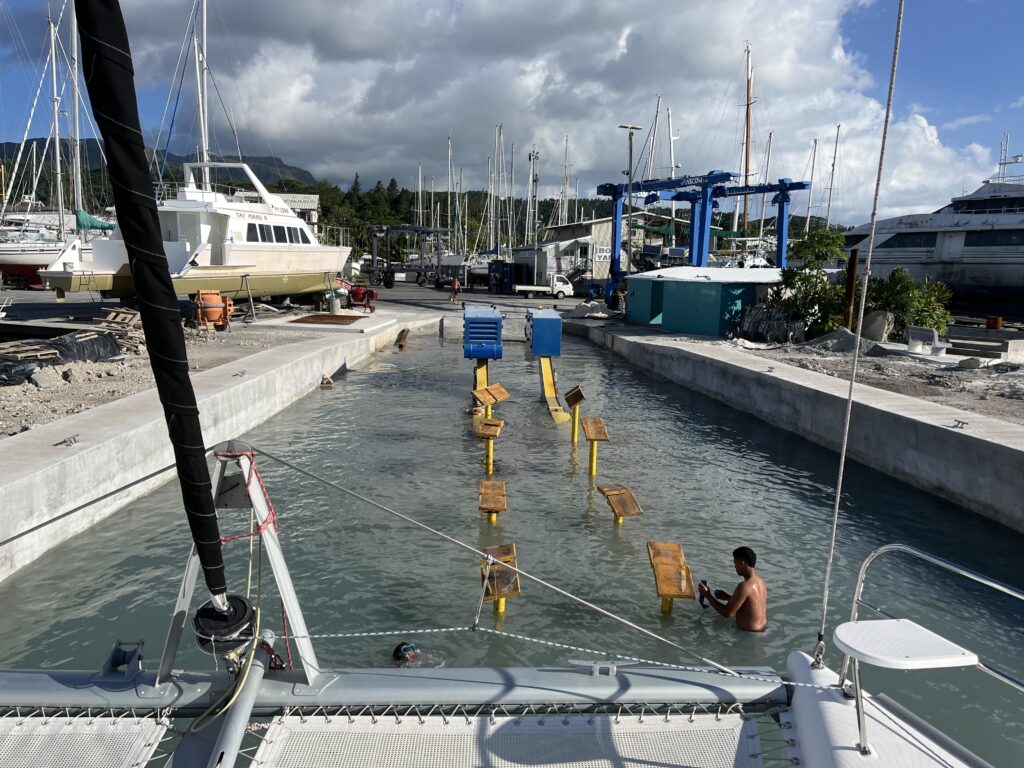
The lift has been driven down the ramp and guys are in the water preparing the feet to support Calista.

The lift driver uses remote control to move the lift and to move each foot up or down to position it just right to support the boat. He is really concentrating with so much happening. And pressure – getting it wrong can cause very expensive damage!

The lift is part way under Calista. There are 6 guys in the water under the boat, positioning the feet, putting rubber pads where needed, making sure Calista is in the right place, etc. Lots going on!
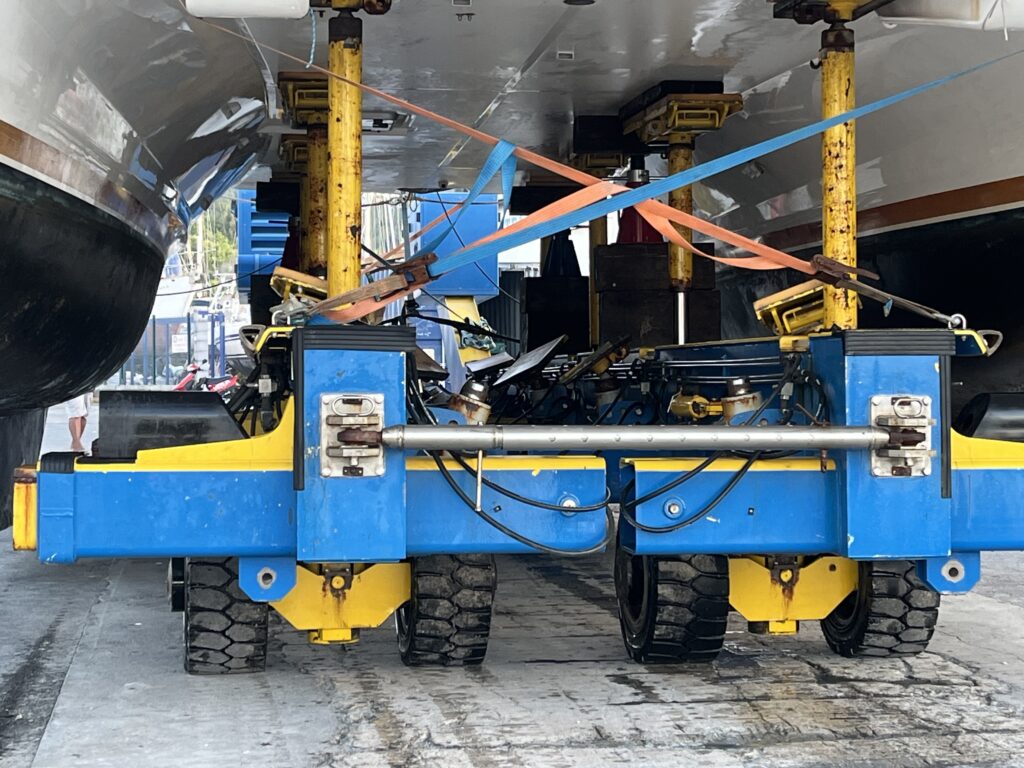
Calista is up on the lift and it has been driven up the ramp and out of the water. Note the hydraulic ram across the back. This allows them to spread the whole system wider for much bigger boats.

Calista is being lowered into the place she will sit for the next 10 days while being worked on. She will get new bottom paint, a wash, polish and wax, new saildrive seals, some fiberglass repair on the stbd bow and stbd rudder. While this is going on, I will be working on some electrical problems, replacing a bad starter motor relay, working on the rigging and a number of other things. The team worked hard on the haulout, getting done just before 7pm, unusually late, especially on a Friday!
We decided not to live on Calista in the yard so we rented two different places nearby. The first 3 nights we were in a place about 3km away. We rented a car to get around and do some tourist things for the first few days.
Saturday was mostly planning, shopping and working on the boat but Sunday we drove down the east side, stopping at the botanical gardens, the ‘Gabbros’ and Taputaputea.

The blue circle top left is where Calista is hauled out. In about the center you see the botanical garden. Below that is the ‘Gabbros’ and on the right is Marae Taputaputea.

The gardens were not the largest we have been to, but they did have some beautiful flowers.
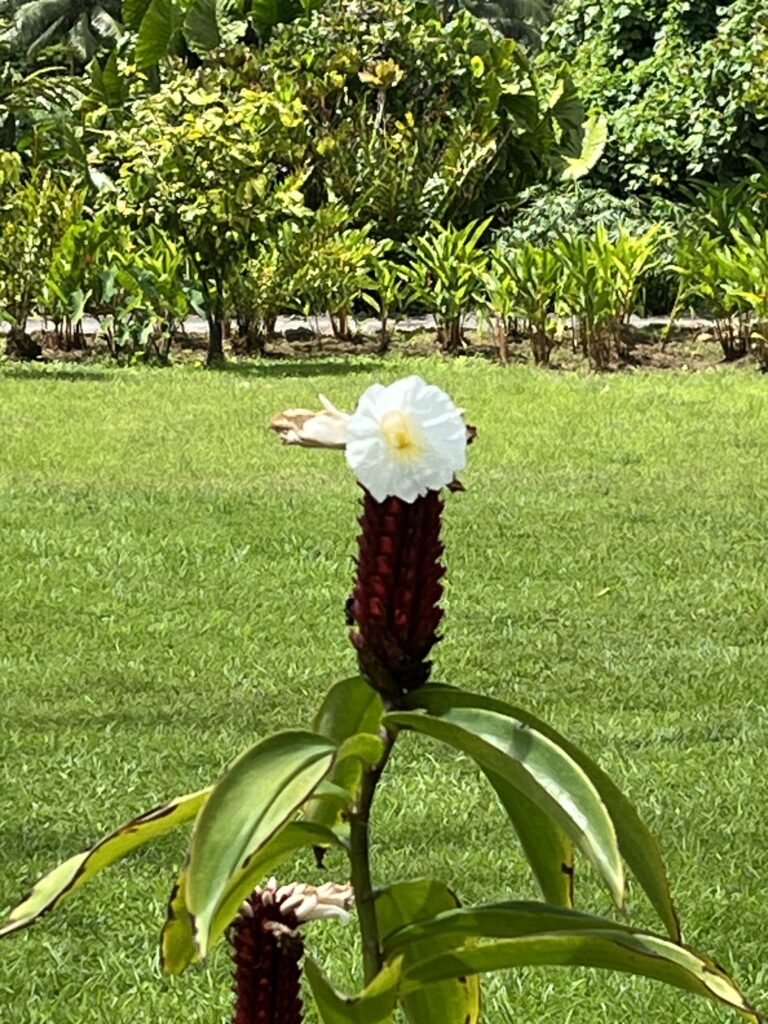
A Crepe Ginger
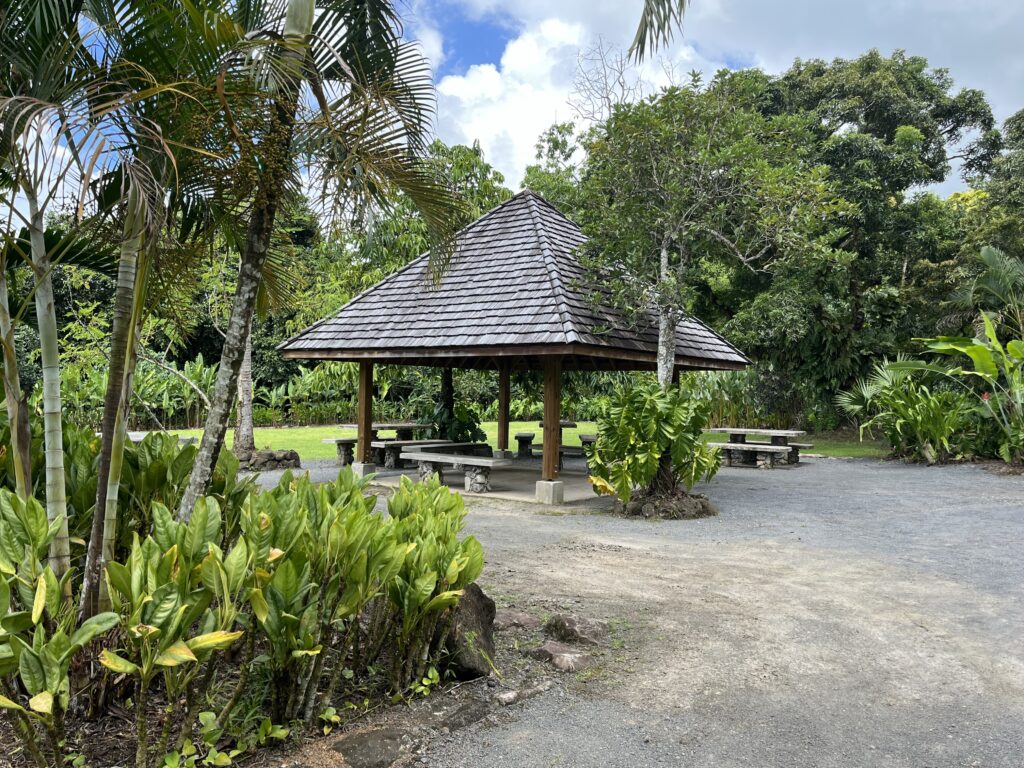
Some nice places for a picnic on the grounds.

Parrot’s Beak

Tiger Lily, AKA Tree Crenum
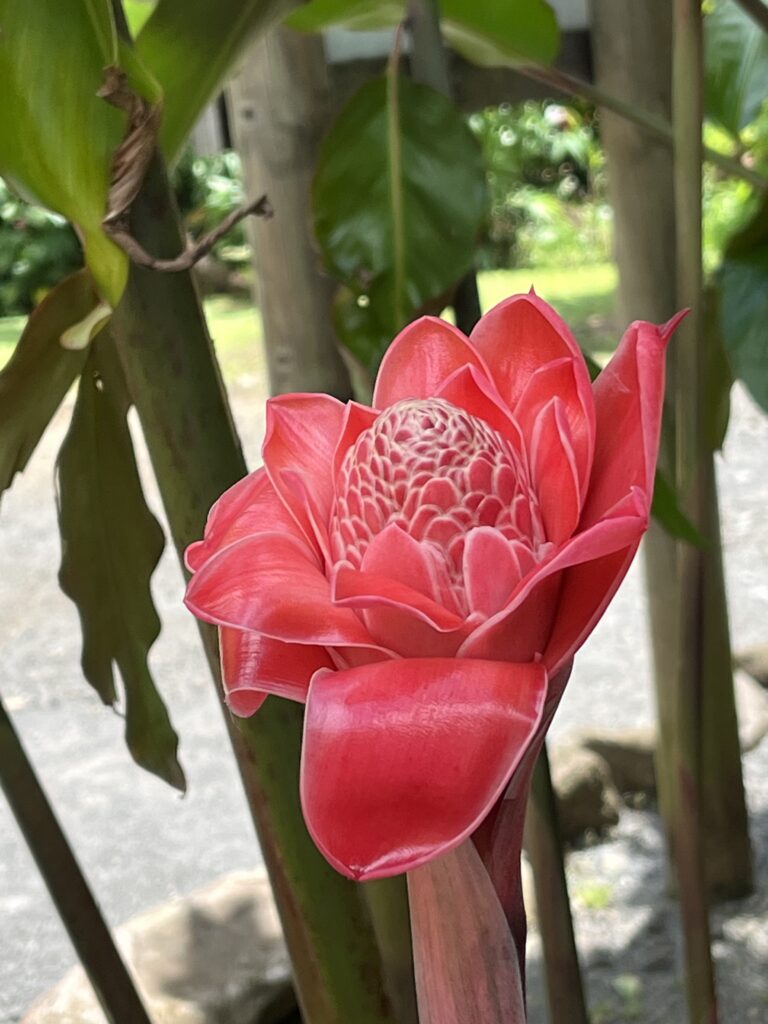
Torch Ginger

Another kind of Parrot’s Beak

A Pagoda Flower
After the gardens, we made a stop at a site that had interesting volcanic formations. I will just paste in the description that they gave:


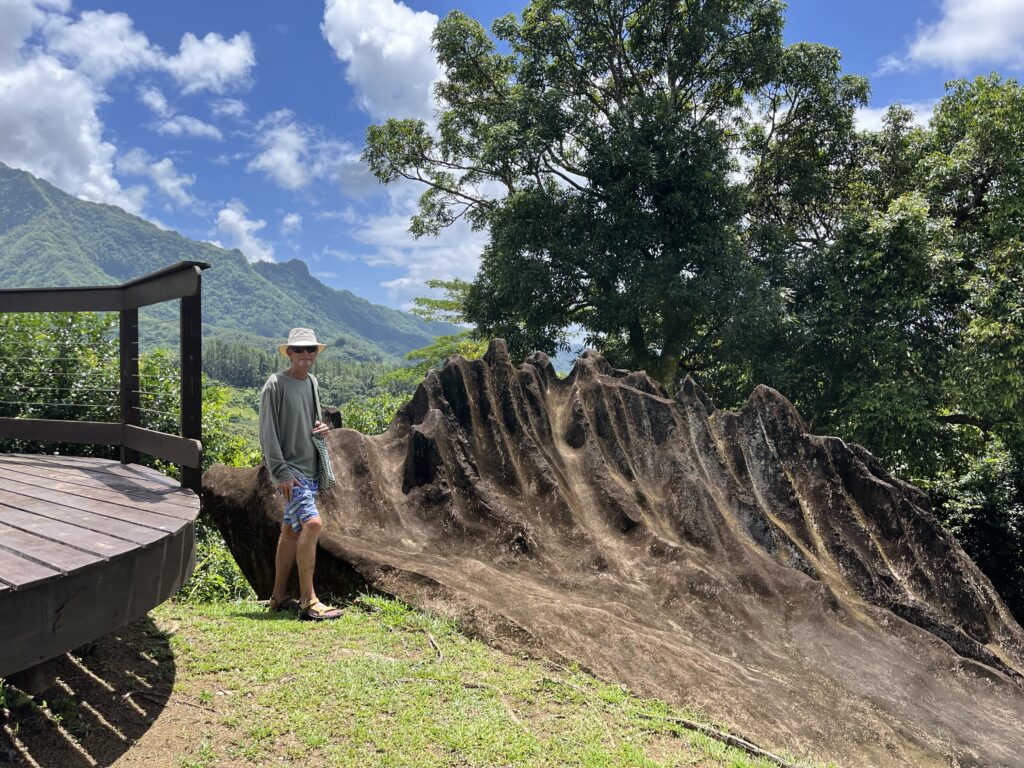
Soon, we were back in the car and heading out to Marae Taputaputea. A Marae is a sacred place of worship where Polynesian Gods live.

Raiatea was the central place for the Polynesian people for about 1000 years and served as a meeting place for important leaders from as far as Hawaii, the Cook Islands and New Zealand. This particular site was the most important Marae of all, dedicated to ‘Oro, the good of Life and Death. No important endeavor could happen without asking for his blessing. For more detail see the UNESCO site for TapuTaputea.


Sacrifices (human and other) happened here to obtain the approval of the gods.

A huge banyan tree.

The leaders from far and wide entered the pass and beached their large (20 to 70 ft long, two hulls) ships here for ceremonial entrance to the religious festival.

Vertical stones faced the water representing the site being guarded by powerful ancestors, each stone being the embodiment of an individual ancestor.

The guarding ancestors were visible from land as well.

This Marae was much taller than the others. Not sure what the significance was. It has the ground level area in the foreground and an area over 6 ft high and maybe 30 ft wide and 60 ft long.
The next post will finish up the haulout.
Thank you for so many great pictures and descriptions!
Interesting territory to see while your work is being done. It must be nice to finally have access to the specialized equipment you need there.